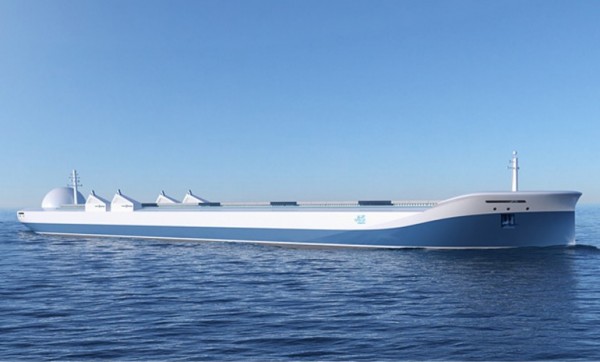Human-less Operated Robotic Ships to Become a Reality
| Cory Doyle | | Sep 22, 2014 06:32 PM EDT |
(Photo : Rolls Royce - A concept rendering of the robotic ship of the future)
The European Union (EU) is funding a project with eight partner companies to build robotic-type ships capable of traveling completely without the use of sailors or crewmembers.
The concept of sailorless ships was first brought to light following an outlined vision from Rolls Royce earlier this year, and aims to eliminate most of the problems involved with human-controlled ships. Rolls Royce released a rendering of the concept, which can be seen in the image above.
Like Us on Facebook
There are increasing numbers of ships launched everyday within the trade industry. Costs to operate and maintain these ships are becoming very expensive with labor costs being the highest expense. Robotic ships would essentially cut out all labor costs entirely.
The demand for crewmembers and labor workers are increasing, but the supply of these labor workers are also decreasing as fewer people are willing spend weeks at a time on the sea.
Most importantly, according to reports, human error contributes to about 75 percent of all accidents at sea. If ships were implemented with advanced automatic steering and mechanisms to easily navigate around any potential obstacles, then accidents would drastically decrease as well.
Some of this technology is already implemented in ships on a small scale, but in order for ships to successfully operate without crewmembers, the ships will need more intelligent computers with powerful processing power and very accurate sensors and systems.
The ships will also need to be built with engines that need less attention, which may involve using lighter fuels or even natural gas.
Project MUNIN aims to evaluate and analyze these hurdles including any other issues that may be involved in bringing the concept of robotic ships to a reality. According to Scandinavian research organization SINTEF, that reality could come within the next 20 years.
TagsProject MUNIN, Robotic ships, European Union, Rolls Royce, SINTEF
©2015 Chinatopix All rights reserved. Do not reproduce without permission
EDITOR'S PICKS
-

Did the Trump administration just announce plans for a trade war with ‘hostile’ China and Russia?
-

US Senate passes Taiwan travel bill slammed by China
-

As Yan Sihong’s family grieves, here are other Chinese students who went missing abroad. Some have never been found
-

Beijing blasts Western critics who ‘smear China’ with the term sharp power
-

China Envoy Seeks to Defuse Tensions With U.S. as a Trade War Brews
-

Singapore's Deputy PM Provides Bitcoin Vote of Confidence Amid China's Blanket Bans
-

China warns investors over risks in overseas virtual currency trading
-

Chinese government most trustworthy: survey
-

Kashima Antlers On Course For Back-To-Back Titles
MOST POPULAR
LATEST NEWS
Zhou Yongkang: China's Former Security Chief Sentenced to Life in Prison

China's former Chief of the Ministry of Public Security, Zhou Yongkang, has been given a life sentence after he was found guilty of abusing his office, bribery and deliberately ... Full Article
TRENDING STORY

China Pork Prices Expected to Stabilize As The Supplies Recover

Elephone P9000 Smartphone is now on Sale on Amazon India

There's a Big Chance Cliffhangers Won't Still Be Resolved When Grey's Anatomy Season 13 Returns

Supreme Court Ruled on Samsung vs Apple Dispute for Patent Infringement

Microsoft Surface Pro 5 Rumors and Release Date: What is the Latest?










